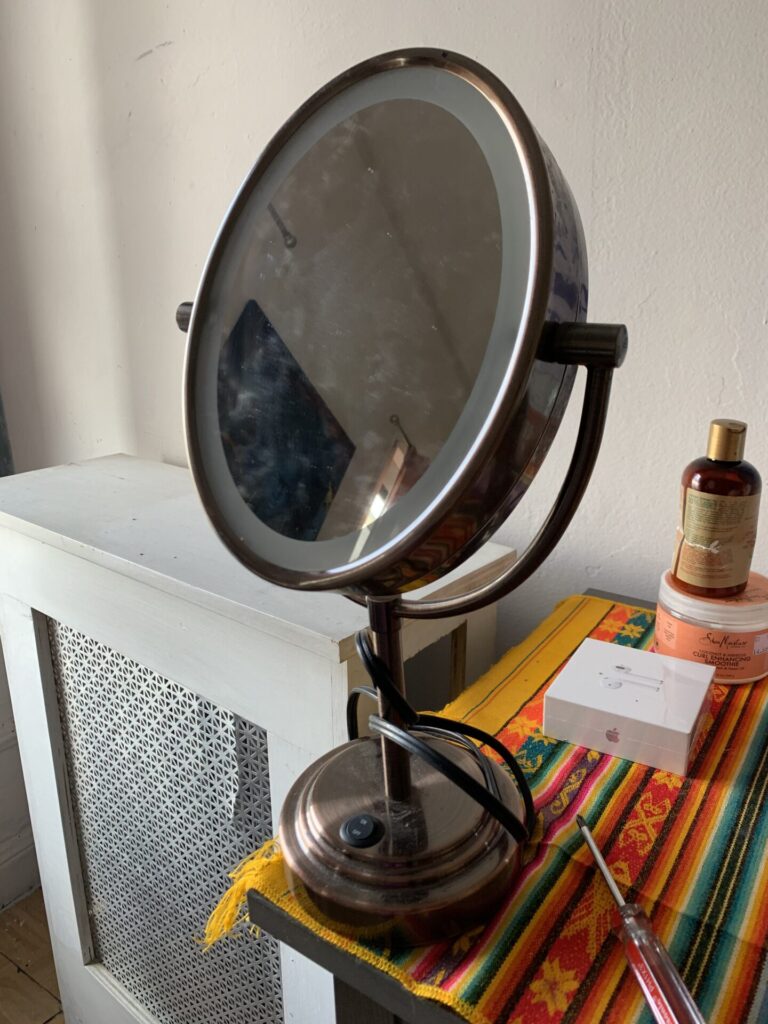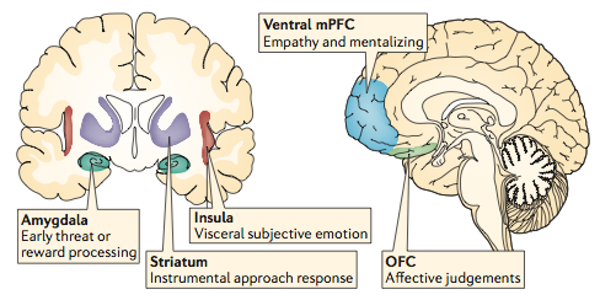ITP at New York University hosted a workshop called “Dismantle/Repurpose”. We were asked to bring old objects to be dismantled: out of date electronics, unworn sweaters, found furniture, etc… While we were using tools to physically deconstruct our objects, each speaker facilitated a discussion regarding the notion of “dismantling as a political/social/meditative act to create connections between the ideas presented and (un)making”.
The workshop began with the implementation of basic safety rules and procedures:
- Make sure your electronics are not plugged into and outlet or any source of electricity (battery pack). Use a rubber or non-metal base to work on.
- Be aware of static electricity. You can ground yourself with s small piece of metal (a penny or any other coin). Hold for 10-30 seconds.
- Be mindful of sharp objects, tools, or breakage when dismantling your objects.
- Pull long hair away from face and secure.
- Work in a well-lit space.
- Make sure you are not under the influence of any substances that can impair judgment, attention, coordination, and motor skills.
- If you have any issues with or questions about your object, ask to be placed in a break-out room with a specialist who can support you.
I chose to dismantle an old, two-sided magnification mirror that used to light up. See pictures below (before & after partially dismantling):


As we began to deconstruct our objects, Dr. Cyd Cipolla, a professor of Feminist Technologies, spoke to us about the relationship between humans and non-human machines. Below are some points I was able to jot down in between dismantling:
- There is a contested boundary between the concrete and ephemeral/discursive and material. Human-made things are socio-material objects. This means that objects are situated and changed based on social setting and social movement.
- One problem with machines is that they guide and through your interactions with it. For example, a copy machine will provide you with instructions on how to use it, what to press if you what a certain number of copies, or what to choose if you what it to be printed in black/white or color. It isn’t until the machine stops working how it is intended, that we are able to engage with it differently.
- The exercise of dismantling an old object of our choosing allowed us to deconstruct the idea of an object along side the material itself. It provided us with an opportunity to dismantle our own internal bias. Ask what could be done differently? What can be changed? What are the possibilities?
- Cipolla then provided us with a “Manifesto for Dismantling”:
- Go Slow
- (Dis)connect
- Respect the work
- Always ask questions
The next speaker was Ashley Jane Lewis, an interactive artist/maker and student at NYU’s ITP. She focused on the need to first acknowledge that tech labs and maker spaces are mostly developed, occupied, led by white men. She explained that this creates a web of obstacles for BIPOC folks to have to navigate in spaces that were not created with them in mind. She offered that one way to begin tackling this issue is by dismantling and reconstructing spaces through the use of Codes of Conduct. This would begin to detangle the web and create points of access for BIPOC and differently-abled folks. Lewis also explained that should be a living document and as you make changes and adjustments to it, must keep in mind who you are dismantling for. Think about where you ask questions and make assumptions. Here is the link to the Code of Conduct she co-created at ITP:
https://github.com/ITPNYU/ITP-IMA-Code-of-Conduct
Lena Warnke, a cognitive scientist and PhD candidate at Tufts University, discussed neural connections to bias in the brain. She explained that the neural processes of stereotypes and prejudices are different, therefore required different approaches. The first image where the amygdala, insula, and striatum are highlighted are the effects of prejudice and the other is stereotyping:

Warnke makes it clear that there should be more work done to link neuro and social sciences. But she also explains that neuroscience research is still in its infancy and therefore these connections haven’t been fully explored yet.
Francisco Navas, Digital Producer and Journalist for The Guardian, broke down so much of what we have learned this semester regarding the myth of objectivity. He explained that his Journalism studies required a promise to seek out the “truth”, provide a broad scope to his readers, and to be “unbiased”. But he quickly learned about “objectivity” is that it is white and male. He then used an onion as a metaphor to peel away the layers of this lens and to dismantle objectivity.
Rashida Kamal is a recent graduate of ITP at NYU. She is a researcher, programmer, and designer. She is also a founding member of the Trash Club, a community platform for investigating waste and waste infrastructures through scholarship, community-driven action, and art. Kamal discussed dismantling e-waste. She explained that we received e-waste after it has been through all of its processes: excavated natural resources, production, distribution, usage, and then waste. She is invested in dismantling and recreating new waste systems that are currently insufficient. Kamal made me think about and question our role as digital humanists in this endeavor. We are very focused on access and creating new avenues to information and technology, but as humanists, shouldn’t e-waste and its environmental impacts be heavily considered in our work? Perhaps an eco-critical approach could reinforce this?
I really loved the way this workshop used the physical practice of dismantling as an opportunity for us to think critically and deeply about the theoretical and methodological elements of this work. During this holistic practice and experience of dismantling, I was able to make many connections, but I was also confronted by many questions and limiting thoughts and feelings around my relationship with technology:
- I was hesitant and resistant to dismantling the mirror because I was afraid of doing it wrong. I was afraid of the lack of instruction and structure. I had the freedom to engage with this object in whichever way I wanted, but because I have only interacted with this piece of technology in the way that is intended, I was more hesitant than I anticipated.
- I was anxious about not being able to put the object back together. Not because I was attached to it or because I wouldn’t be able to utilize it again (it was already broken), but because I was fixated on the original intention of its use and therefore its “correct” structure. This and my previous point, brought Cyd Cipolla’s mention of the socio-materiality of objects to life for me.
- Tools were a huge factor in the ways I could(n’t) dismantle/reconstruct my object. This brought up a few things and reminded me of some of our class discussions: Which tools (technologies) are best for this project? Do I have access to these tools? If I don’t, how can I hack (or repurpose) the tools that I do have in order to get as close as possible to my desired outcome? What are the limits of these tools and how can I make them better?
Again, this was a wonderful workshop and great learning experience. I encourage everyone to attempt this practice and take note of your process!




What a fascinating workshop! Thank you so much for sharing your experience. I would definitely have the same hesitancy you experienced in taking apart an object, but now I want to challenge myself to try this.